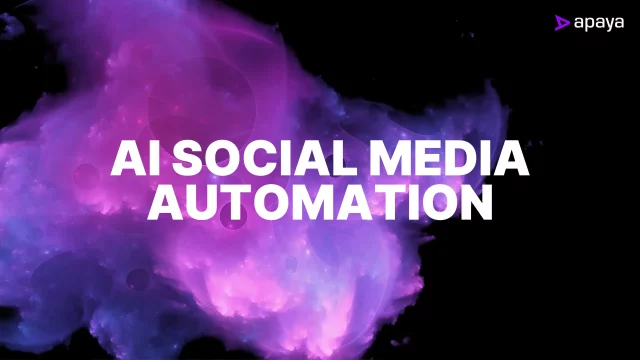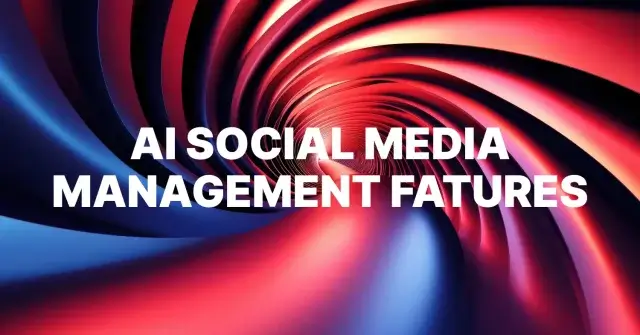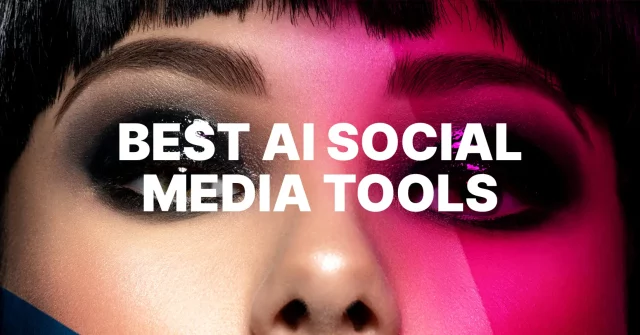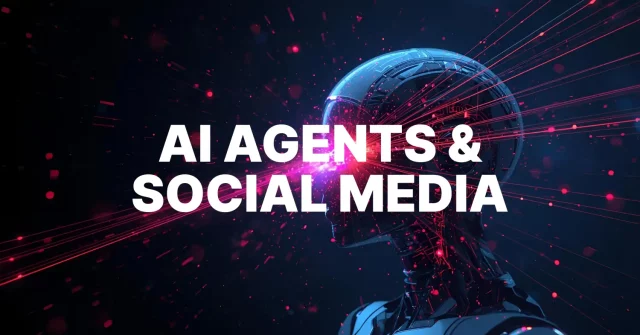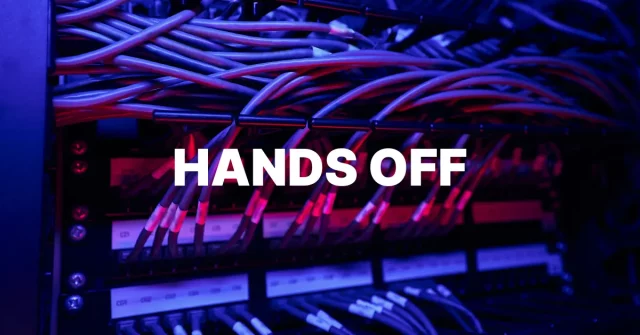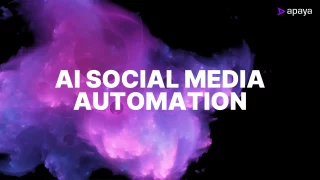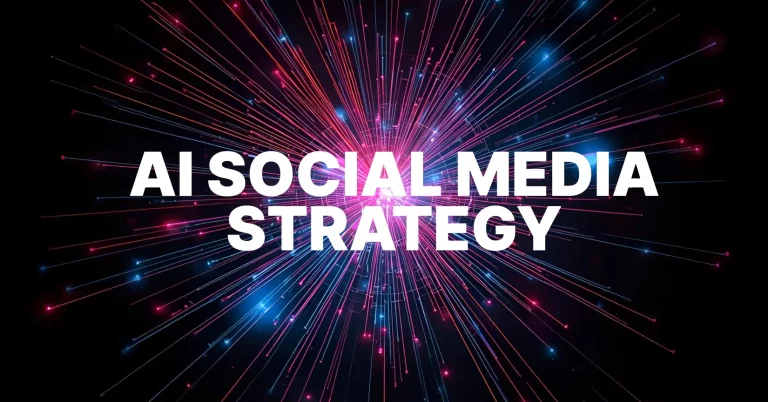
How to: AI Social Media Strategy for Small Businesses (5-Step Guide)
Written by: Tim Eisenhauer
Last updated:

Stop guessing. Here’s a simple plan to get started, even if you have zero time.
The 5-step social media strategy.
The Traditional Approach:
- Choose 1-2 platforms where your customers are
- Define 3 content pillars (educate, showcase, connect)
- Create content weekly (20+ hours of work)
- Schedule consistently
- Measure and repeat
The Reality: This takes 15-20 hours per week you don’t have.
The Solution: Automate the entire strategy with AI that learns your brand and creates everything for you. Set up in 5 minutes, run forever.
“The definition of insanity is doing the same thing over and over again and expecting different results.”
– Albert Einstein (probably didn’t say it, but it fits)
I was sitting in my home office at 9 PM, staring at Buffer’s empty scheduling calendar like it was going to fill itself. Three tabs open: Canva, ChatGPT in another, and our Kokotree Instagram account in the third.
This was 2023. My co-founder and I had just launched Kokotree—an educational app for preschoolers—and everyone kept telling us the same thing: “You need to be on social media to reach parents.”
So there I was. The guy who’d built and sold a software company for millions, trying to write compelling content about toddler learning milestones. The irony wasn’t lost on me—I’d created collaboration software used by millions, but I couldn’t figure out how to make a damn Instagram post that didn’t look like it was designed by someone’s dad. Which, technically, it was.
The worst part? I knew this was eating 20 hours a week that I should’ve been spending on product development. But what choice did I have? Agencies wanted $5,000 a month to post three times a week. Hiring someone full-time meant $60,000 plus benefits.
That’s when it hit me: I was solving the wrong problem. I didn’t need a better scheduler or fancier templates. I needed to stop doing social media entirely while still having social media happen.
If you didnt know, I hate social media. Well, I like reading it. But posting? ugh. No thanks.
You know you should be on social media. But where do you even start?
Let me guess your situation. You’re running a real business—plumbing, accounting, roofing, whatever pays the bills. You’re not a “content creator.” You fix things, build things, or solve problems for other humans.
But you know that dusty Facebook page with three posts from 2020 makes your business look defunct. Maybe even dead.
You’ve got two terrible options staring at you:
Option 1: Do It Yourself
Spend your nights and weekends in Canva. Learn what a “reel” vs a “short” is. Become a part-time photographer. Wave goodbye to 15-20 hours a week.
Option 2: Hire an Agency
Fork over $3,000 a month to someone half your age who calls everything “fire” or says they were “cooking” last night … and still doesn’t understand what you actually do.
Both options suck. Both eat time or money you don’t have.
Here’s what nobody tells you: The social media “strategy” everyone preaches is designed for companies with marketing departments, not businesses with actual work to do.
I’m going to show you that strategy first—the one everyone says you “need.” Then I’ll show you why it’s a trap. And finally, I’ll show you how to get the same results in about 5 minutes.
Part 1: The 5-step “manual”social media strategy for small businesses. (Old school version)
Before I show you the shortcut, you need to understand what you’re supposed to be doing. This is the playbook every guru sells for $997. I’ll give it to you free.
Step 1: Choose your platforms (Don’t be everywhere).
The first mistake everyone makes is trying to be on all five platforms at once. You know what happens? You do none of them well.
Pick one or two. That’s it.
Where’s your audience actually hanging out?
- Facebook: Still the king for local businesses. If you’re a contractor, restaurant, or service business, your customers are here. Especially if they’re over 35.
- Instagram: Visual businesses only. Landscapers showing transformations. Painters with before-and-afters. Real estate agents with house tours. If you can’t show it, skip it.
- LinkedIn: The only platform that matters for B2B. Lawyers, accountants, consultants, SaaS companies. If you sell to businesses, not consumers, this is your home.
- X (Twitter): For thought leaders and tech companies. Real-time commentary. Building a personal brand. Unless you love arguing with strangers, probably skip it.
Your setup task: Create profiles on your chosen 1-2 platforms. Upload your logo. Write a bio that says what you do in plain English. Done.
Step 2: Define your content pillars (What to talk about).
You can’t just post “Call us for a quote!” every day. Nobody follows a billboard.
You need three content pillars. Steal mine:
Pillar 1: Educate
Share knowledge that helps before they hire you.
- Roofer: “3 signs your shingles are failing”
- Accountant: “The tax deduction everyone misses”
- Plumber: “Why your toilet runs all night”
Pillar 2: Showcase
Prove you do actual work.
- Before-and-after photos
- Customer testimonials
- Project walkthroughs
Pillar 3: Connect
Show you’re human, not a corporation.
- Your origin story (why you started)
- Team introductions
- Behind-the-scenes moments
These three pillars keep your feed balanced. Not too salesy, not too personal, just right.
Step 3: Create the actual content (The hard part).
Here’s where the fantasy meets reality. For every single post, you need to:
- Write an engaging caption that doesn’t sound like a robot
- Design a professional graphic in Canva (hope you remember your login)
- Make sure your logo and brand colors match (they won’t)
- Resize that graphic for each platform:
- Square for Instagram (1080×1080)
- Rectangle for Facebook (1200×630)
- Different rectangle for LinkedIn (1200×627)
- Whatever Twitter wants this week
One post. Four versions. Thirty minutes if you’re fast.
Now multiply that by 3-5 posts per week. We’re at 2.5 hours already, and we haven’t even scheduled anything yet.
Step 4: Set a schedule (The consistency problem).
Social media only works if you’re consistent. A dead feed is worse than no feed—it screams “we went out of business.”
So you need a scheduler tool. Buffer, Hootsuite, pick your poison. They all do the same thing: post what you already created.
Now you:
- Upload all that content you just made
- Guess the “best time to post” (you’ll guess wrong)
- Set the schedule manually for each platform
- Hope you didn’t miss anything
Add another 5 hours per week. We’re at 7.5 hours now.
Step 5: Measure and repeat (The “what now?” problem).
End of the week rolls around. Time to check your analytics across all platforms:
- Facebook Insights
- Instagram Analytics
- LinkedIn Analytics
- Your scheduler’s dashboard
Figure out what worked (nothing), what didn’t (everything), and then…
Do it all over again next week.
Total time: 15-20 hours per week. Every week. Forever.
Part 2: And here’s why that 5-step plan is a trap for small businesses.
The strategy I just gave you is perfect. It’s what Coca-Cola does. Nike does it. Every million-dollar brand with a 10-person social media team does it.
Except you’re not Nike. You’re not even trying to be Nike. You’re trying to run a business.
The math doesn’t work:
- 20 hours per week on social media
- 52 weeks per year
- 1,040 hours annually!
At $50/hour (what your time is worth, at least), that’s $52,000 in lost productivity. For what? To maybe get 12 likes on a post about proper gutter maintenance?
This is why every small business falls into the feast-or-famine cycle:
Week 1: “We’re doing social media!” (5 posts)
Week 2: “Getting the hang of this!” (3 posts)
Week 3: Big project comes in (1 post)
Week 4: Crickets
Week 5-52: “We should really get back to social media…”
Your last post says “Happy Thanksgiving!” and it’s currently April. Your customers think you went bankrupt.
I tried this manual approach for six months. You know what I learned? I’m really good at software and really bad at being a content creator. The ROI was negative—I was losing money every hour I spent on Instagram instead of coding.
Part 3: The new way: Automate the job, not just the tasks. The AI social media strategy for small businesses.
Here’s what changed everything for me: I stopped thinking about social media tools and started thinking about social media systems.
Schedulers are dumb tools. They’re alarm clocks for content you still have to create. That’s like buying a really expensive filing cabinet for documents you haven’t written yet.
What you need isn’t a scheduler. You need an AI social media manager—something that does the entire job, not just the posting part.
Here’s that 5-step strategy again (But done by AI).
Remember those 5 steps that take 20 hours? Here’s what happens when you automate the actual thinking, not just the clicking:
Step 1 & 2: Platforms & Pillars → SOLVED in 5 minutes
Your job: Give the AI your website URL. That’s it. Seriously.
The AI’s job: It crawls your entire website like Google would. Reads your about page, service descriptions, testimonials. Extracts your logo, brand colors, even your writing style. In 5 minutes, it builds your complete Brand Framework—understanding your business better than most agencies would after three discovery calls.
Step 3: Content Creation → SOLVED automatically
Your job: Nothing. Maybe drink coffee.
The AI’s job: Based on your Brand Framework, it generates complete posts. Not just captions—everything. Engaging headlines, body copy that sounds like you (because it learned from your website), relevant hashtags, AND professional graphics with your logo and brand colors.
Modern LLMs can capture your exact voice, not pump out generic “In today’s fast-paced business world” garbage.
Step 4: Scheduling → SOLVED with one click
Your job: Click “Approve” if you want. Or don’t. Your choice.
The AI’s job: It analyzes when YOUR specific audience is most active (not generic “best times”). Then it publishes automatically across all your connected accounts—Facebook, Instagram, LinkedIn, X—with platform-specific formatting. No manual uploading. No guessing. No Sunday night panic.
Step 5: Measuring → SOLVED by learning
Your job: Watch your engagement grow.
The AI’s job: It tracks every metric, identifies what resonates with your audience, and automatically adjusts. More of what works, less of what doesn’t. It gets smarter every week without you lifting a finger.
The entire 5-step strategy that takes humans 20 hours now takes 5 minutes to set up and 0 minutes to maintain.
You don’t need a strategy. You need an AI social media automation system.
I spent two years trying to “create a social media strategy.” Reading guides, taking courses, downloading templates. You know what I learned?
Strategy without execution is just daydreaming.
You don’t need another PDF worksheet about “content pillars.” You need posts going live while you’re actually running your business.
Here’s all you need to get started right now:
- A website (so AI can learn your brand) – Don’t have one? You can describe your business instead
- Social media accounts (Facebook, Instagram, LinkedIn, X) – Just need them to exist, doesn’t matter if they’re empty
- Your logo – The AI usually finds this on your website anyway
That’s it. No strategy sessions. No content calendars. No “brand voice workshops.”
You can have your entire next month of professional social media content created and scheduled in the next 10 minutes. Not templates. Not generic posts. Actual content that sounds like you, looks like your brand, and posts automatically.
While your competitors are still watching YouTube tutorials about “optimal hashtag strategies,” you’ll already have 30 days of content live.
- The old way makes you a part-time content creator.
- The new way lets you stay a full-time business owner.
Your customers don’t care about your social media strategy. They care that you show up consistently, provide value, and look professional. AI handles all three while you handle actual business.
Stop trying to become a marketing agency. Start using one that runs itself.
Start your free 3-day trial now. No credit card required. See your first AI-generated posts in minutes.
Want to see the full system in action? Read our Complete Guide to AI Social Media Automation.
—
If you’re tired of strategies that assume you have nothing better to do than make Instagram posts, you might like my book, because I spent 300 pages explaining why most business advice only works if you don’t have an actual business to run.
